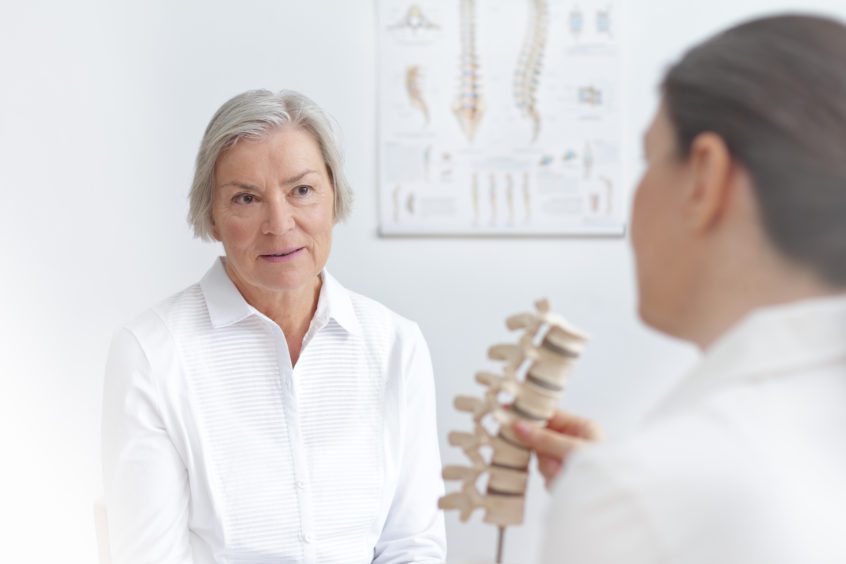What Osteoporosis Can Tell Us About Hearing Loss Risk
According to a study recently published in the Hearing Journal, a first-of-its-kind study has found that osteoporosis and low bone density may be important contributors to age-related hearing loss. A nationwide longitudinal study of nearly 144,000 women in the U.S., with up to 34 years of follow-up, determined that osteoporosis, or low bone density, was independently associated with up to a 30% higher risk of moderate or worse hearing loss.
A total of 60,821 NHS and 83,078 NHS II women were included in this analysis. NHS participants were followed up to 34 years, from 1982 to 2016, while NHS II participants were followed up to 22 years, from 1995 to 2017. Participants completed questionnaires at baseline and every two years after regarding numerous health outcomes, medications, diet, and lifestyle. Both groups had greater than 90% follow-up response rates.
Information on osteoporosis, low bone density, bisphosphonate use (treatment for osteoporosis), vertebral fracture, hip fracture, and hearing status was obtained from the validated questionnaires. The researchers’ analyses excluded those who reported a hearing problem that began before the baseline for each analysis, did not report a date of onset, or reported cancer other than non-melanoma skin cancer due to possible exposure to chemotherapy drugs that may be ototoxic.
The study also considered potential confounders previously suggested to be associated with osteoporosis or hearing loss. In the primary analyses, factors included age, race/ethnicity, body mass index, waist circumference, physical activity, Dietary Approaches to Stop Hypertension (DASH) adherence score, alcohol intake, hypertension, diabetes mellitus, type II, smoking, thiazide use, menopausal status, and ibuprofen, acetaminophen, and oral hormone use. In additional models, the analyses included furosemide use and intakes of specific nutrients, including dietary and supplemental calcium, magnesium, potassium, sodium, phosphorus, animal protein, sucrose, vitamin C, and vitamin D.
In a sub-group or 3,700 participants, comprehensive audiometry assessments were conducted by licensed audiologists at 19 geographically diverse Conservation of Hearing Study (CHEARS) testing sites across the U.S.
The study reported that after 1,509,711 person-years of follow-up in NHS and 1,468,175 person-years of follow-up in NHS II, there were 12,460 (NHS) and 4,565 (NHS II) incident cases of moderate or worse hearing loss reported. In multivariable-adjusted analyses, the risk of moderate or worse hearing loss was higher among women with osteoporosis or low bone density in both groups, according to the study. The magnitude of the elevated risk was similar among women who did and did not use bisphosphonates to treat osteoporosis, per the study results.
The Importance of This Study
According to the National Institutes of Health, hearing loss is one of the most common conditions affecting older and elderly adults. Approximately one in three people between the ages of 65 and 74 has hearing loss and nearly half of those older than 75 have difficulty hearing. The Centers for Disease Control states that one of out of eight women report they have at least some trouble hearing and as women age, they may have more difficulty hearing at lower frequencies than their male counterparts.
Having trouble hearing can make it hard to understand and follow a doctor’s advice, to respond to warnings, and to hear doorbells and alarms. It can also make it hard to enjoy talking with friends and family. Additional studies have shown it is linked to depression, cognitive decline, diabetes and heart disease. Unfortunately, as the population ages, hearing loss is expected to increase.
In addition, about 25% of U.S. women 65 and older have osteoporosis, characterized by reduced bone density that can lead to skeletal fragility and a higher risk of fractures. According to the study, osteoporosis results in an estimated 1.5 million fractures per year in the U.S., most of which occur in postmenopausal women.
Osteoporosis is associated with reduced bone mass which can lead to compromised bone strength and increased risk of fractures, according to the study. Vertebral fractures are the most common symptom of osteoporosis, but there is also a strong risk for hip fracture for those with the condition. Animal studies have suggested osteoporosis is a potential risk factor for hearing loss, but the underlying mechanisms are unclear.
This study also examined the role of bisphosphonates, the primary therapy for reducing risk of fractures in individuals with osteoporosis and other skeletal conditions. A separate study in noise-exposed mice demonstrated treatment with a third-generation bisphosphonate was associated with stabilization or improvement of sensorineural hearing loss.
Additional study is necessary to further determine the connection between hearing loss and osteoporosis, and whether treatment for osteoporosis can help reduce the risk of hearing loss, along with other healthy lifestyle changes.
In the meantime, be aware that if you’re a woman who has been diagnosed with osteoporosis, you also may be at risk for hearing loss.
Schedule an appointment with a doctoral-level audiologist who can conduct a comprehensive hearing evaluation, an important step in establishing a baseline for your hearing health.



